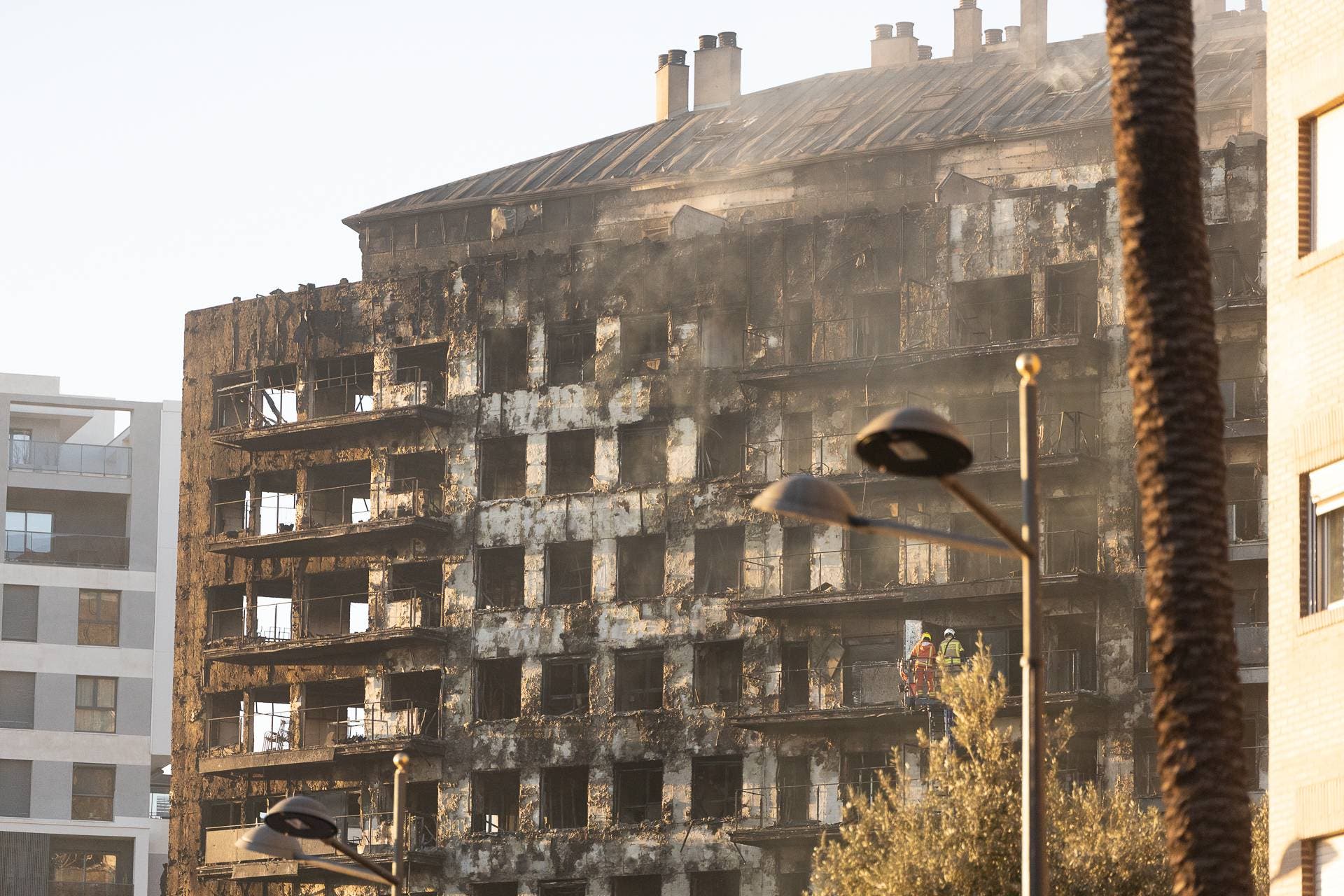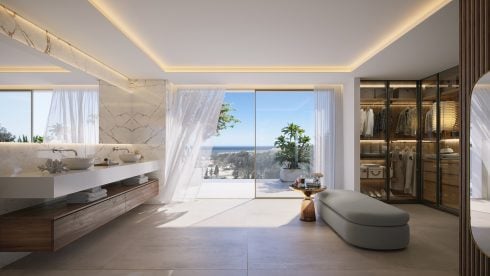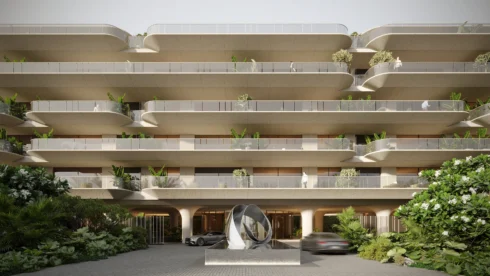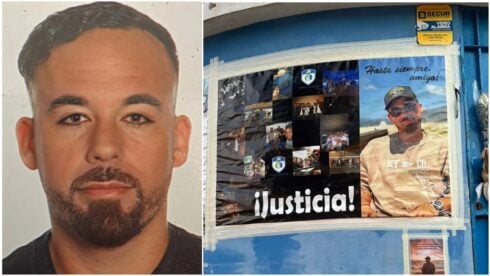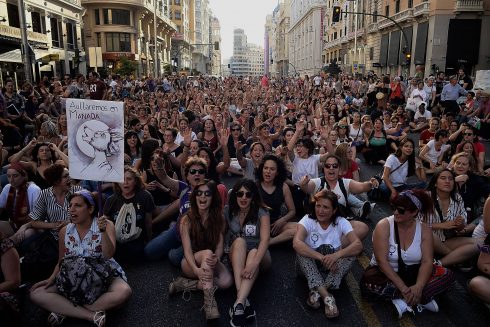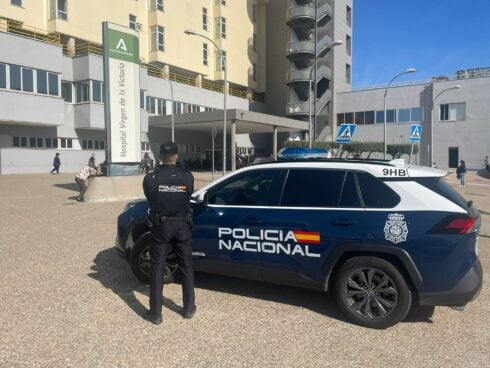THE deadly fire that killed 10 residents of a Valencia apartment complex may have been spread by the use of a highly flammable cladding banned in the UK, the Olive Press can reveal.
Ten people perished in the inferno on Avenida del General Alives on February 22, including a newly-married couple and their two-week old baby.
The tragic blaze has been dubbed ‘Spain’s Grenfell’ in reference to the similar 2017 tower block fire that killed 79 people in London.
The adjoining buildings, which housed approximately 450 residents, were built by Catalan company FBEX, which dissolved in 2010 at the height of the Spanish property crisis after racking up debts worth over €600 million.
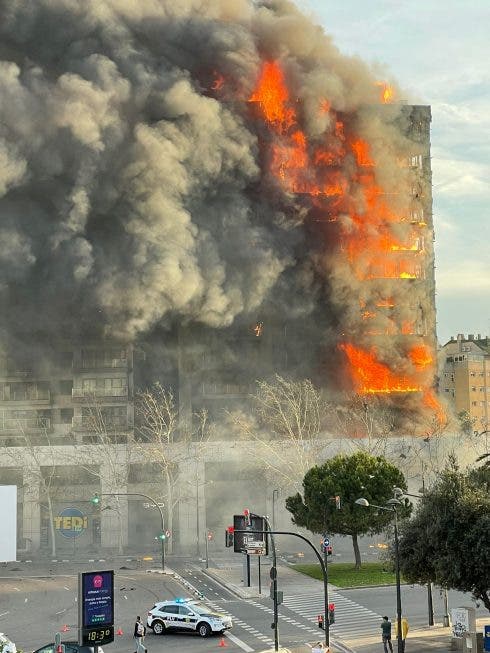
Prior to its liquidation, the company operated in Catalunya, Valencia and the Balearic Islands.
Media reports initially blamed ‘Alucobond’, a brand of rear-ventilated facades, after an FBEX promotional video claimed that the apartments were wrapped in an ‘Alucobond-type cladding’.
However, images taken from Google Maps of the building’s construction in the Nou Campanar neighbourhood of Valencia show cladding emblazoned with a logo reading ‘Larson’.
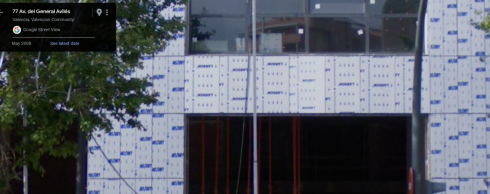
‘Larson’ is the brand name for aluminium composite materials (ACMs) produced by Alucoil, a Spanish multinational company based in Burgos.
Alucoil currently produces two types of ACM used to clad buildings – ‘Larson FR’ and ‘Larson A2’, although the latter has only been introduced within the last decade.
According to Valencia’s Official College of Technical Architecture, construction works for the building began in February 2006 and finished in 2008.
An investigation carried out by the Olive Press suggests that the cladding used may have been of a type known as ‘Larson PE’, a common version of ACM discontinued by the company in the wake of the Grenfell Tower disaster.
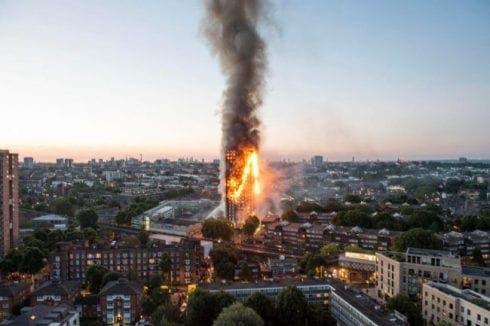
Marketing materials indicate that Larson PE was still on sale in late 2018.
According to official documentation, Larson PE is a ‘composite panel produced by two sheets of Aluminium with a low density polyethylene inside core’.
Paul Hyett, an expert witness to the Grenfell enquiry and a former president of the Royal Institute of British Architects, told the Olive Press that polyethylene is ‘highly inflammable’, with a combustibility akin to ‘diesel fuel’.
Larson PE received a classification of E on the EU’s EN-13501 fire safety test, the same score received by Reynobond PE, the type of cladding widely blamed for spreading the flames on Grenfell Tower.
The ratings on the test extend from A to F, with A the lowest inflammability and F the highest.
UK regulations currently state that cladding used on buildings with a height exceeding 18 metres must have a rating of either A or A2, indicating incombustibility.
Five tower blocks in Norwich were forced to have their Larson PE aluminium composite cladding removed in 2018 after the facade failed fire safety tests.
Jonathan Sakula, the official cladding consultant to the Grenfell enquiry, told the Olive Press: “Polyethylene is a combustible filler, like the one used on Grenfell. It is not a good material to use, especially on high-rise buildings, as it is too combustible”.

Larson FR is a more fire-retardant version of Larson PE – however, with a score of B on the EU’s fire safety standard, it would still remain unsuitable for high-rise buildings under new UK legislation.
Larson FR was first mentioned on Alucoil’s website in 2008, the year that construction of the Valencia apartment complex was completed.
It was described as ‘the first step of a new composite panel generation with which Alucoil hopes to answer modern architectural needs’.
A revised technical building code (CTE) was introduced in Spain in March 2006, one month after construction in Valencia began, explicitly mandating ‘the limitation of the risk of fire spread via the exterior of the building’.
Buildings known to be clad with Larson PE include: residential blocks in A Coruña and Madrid, a Carrefour supermarket in Mijas, the University General Hospital of Cartagena, the Oceanic Centre in Valencia and buildings at Jerez Circuit. The buildings were clad between 2002 and 2014.
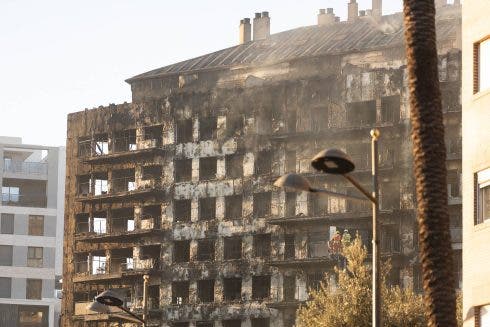
Experts from the Official College of Property Administrators (CAF), in conjunction with the College of Architects of Malaga, are reviewing buildings on the Costa del Sol with similar characteristics to the Valencia apartment block that burnt down last month.
Manuel Jimenez, president of the Malaga branch of CAF, urged for calm, stressing that ‘the characteristics of this building are not common in Andalucia’.
It is unknown how many residential buildings across Spain contain Larson PE cladding, or similarly inflammable equivalents.
Mr Sakula stressed to the Olive Press that ‘there is no way of truly telling what happened until one does a proper investigation’.
Mr Hyett likewise suggested that other factors, such as the use of cavity barriers to inhibit the passage of smoke and fire through the gap between the cladding and insulation, must be thoroughly analysed.
Susana Gomez de Lara, head of the College of Architects of Malaga, told Malaga Hoy that the cavity space was ‘not compartmentalised’, and that high winds may have created a ‘chimney effect’, a toxic combination that may have helped to spread the flames across the building.
An official investigation continues.
The Olive Press approached Alucoil for comment but received no response.
READ MORE:
- Valencia fire: Death toll of ‘Spain’s Grenfell’ reaches 10 – including a mother and her children
- Are there buildings on the Costa del Sol with the same flammable cladding as the Valencia fire tower block?…
- Three family members are killed in a tower block fire on Spain’s Costa Blanca
Click here to read more News from The Olive Press.

